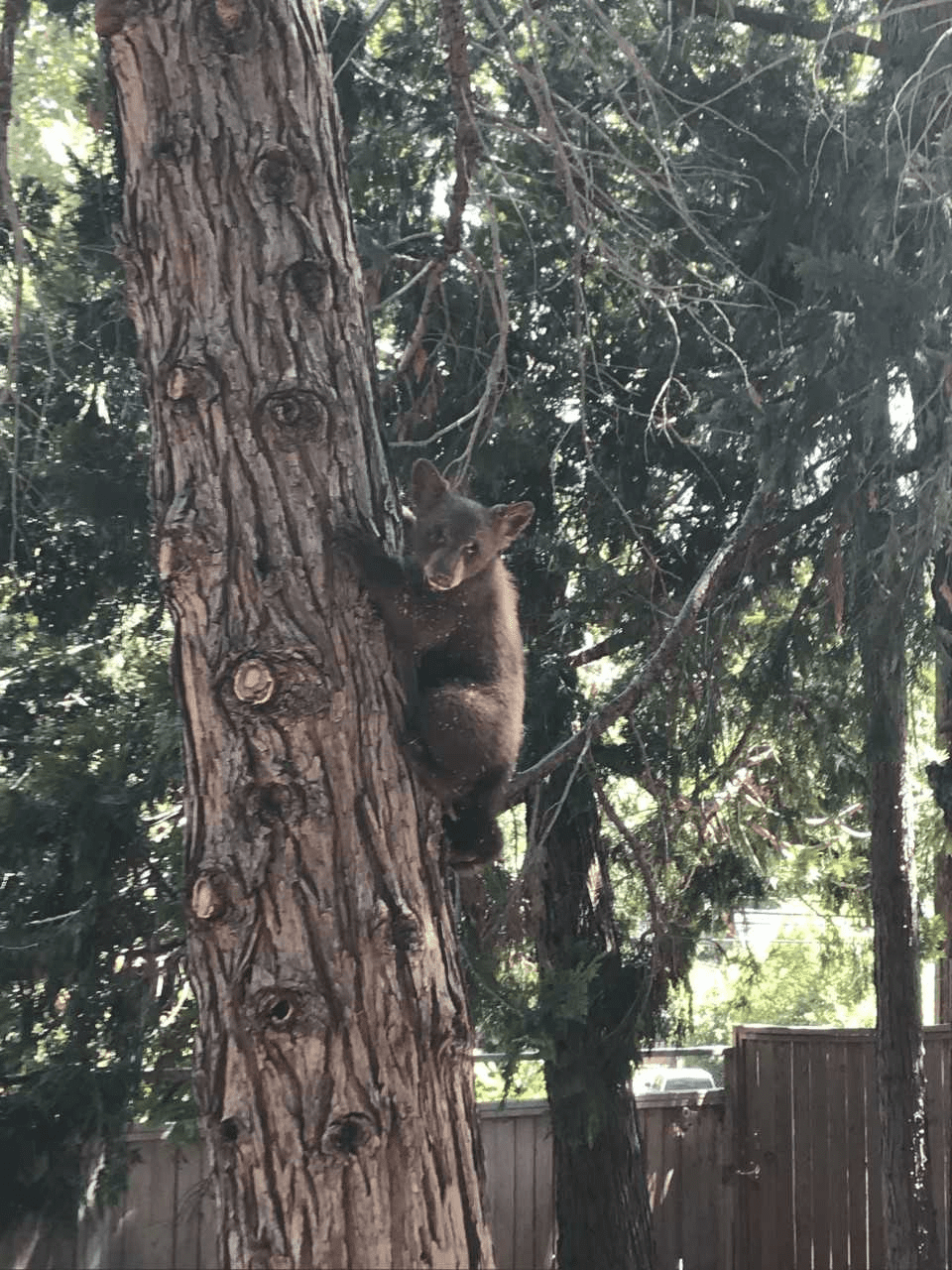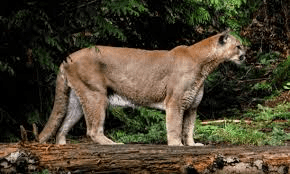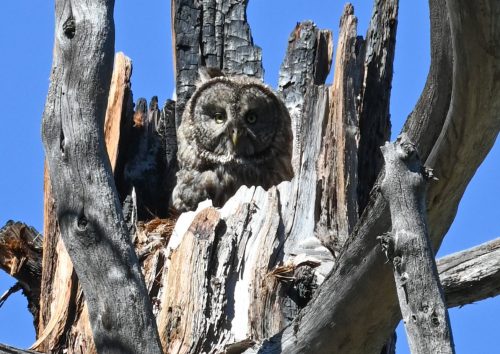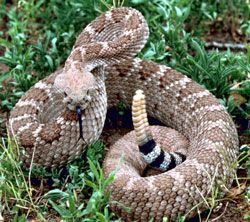Wildlife
Experience True Wilderness
Large parts of the Mother Lode have been set aside for wildlife to live in. Here is a list of animals you might encounter and a place to share stories about encounters you may have had. When visiting be sure to treat all animals you encounter as wild, keep a safe distance, and do not feed them. The Groveland Museum has an exhibit featuring information of animals in the area, for more visit the Museum section of the destination guide.
American Bald Eagle
These birds use New Melones Lake primarily during the winter, although some are occasionally seen during the summer. Two pairs of nesting bald eagles have been seen recently on New Melones Lake. As many as 20 bald eagles have been sighted during the winter on the shores of Don Pedro Reservoir, roosting in stands of foothill pines.
Bear
There are black bears in the Sierra Nevada foothills and many live in Yosemite. You may not see one during your visit because bears naturally avoid people. If you see a bear in Yosemite, always let a ranger know or leave a message at 209 372-0322.
 In a campground, parking lot, lodging area, or if a bear approaches you, act immediately to scare it away as in the video: make as much noise as possible by yelling or banging pots together. If you are with other people, stand together to present a more intimidating figure, but do not surround the bear.
In a campground, parking lot, lodging area, or if a bear approaches you, act immediately to scare it away as in the video: make as much noise as possible by yelling or banging pots together. If you are with other people, stand together to present a more intimidating figure, but do not surround the bear.

Always keep your distance (at least 50 yards, or about the distance four parked shuttle buses would take up).
Bears are hungry and curious “food” includes any item with a scent, regardless of packaging. This may include canned foods, drink bottles, soap, cosmetics, toiletries, ice chests (even when empty), and unwashed items used for preparing or eating meals. All these items must be stored properly.
Do not store food in your car, especially not after dark: use a food locker available at Curry Village parking lots and at nearly all trail head parking areas and campsites. Bears may enter campsites even in your presence, and some will even check lockers to see if they’re latched. For more information visit our page about backpacking.
Coyote, Fox, Raccoon
Although fairly common in the Mother Lode, because they hunt mostly at night, they are rarely seen. Generally, these animals avoid areas where people reside, although on occasion you may see one cross a road or hear a coyote howl off in the distance.
Mountain Lion

Mountain lions are found in the Sierra Nevada foothills, it can be easy to underestimate these predators. They have large ranges and will follow the migratory pattern of their prey, the mule deer. Mountain lions have been spotted adjacent to trails and developed areas of New Melones Lake, Yosemite and many places in the Mother Lode including close to downtown Sonora. These cats prefer cliffs, rocky ledges and ridge tops where they can watch for prey. Their light tan color enables them to remain concealed until they are very close.
Attacks by mountain lions in California are rare, but can occur. Precautions that can be taken include:
- Know where you are hiking, bicycling or jogging by checking out the latest advisories posted.
- Go in groups, Most attacks that have occurred involved a single person.
- If confronted by a mountain lion make yourself look as large as possible.
- Fight off any attack aggressively; running away may prompt the predator to be more aggressive.
Report sightings in populated areas to the local police department. For more information contact the California department of fish and game.
Mule Deer
The mule deer is the most familiar of the large mammals in the Sierra Nevada foothills. These deer are distinguished from other deer in California by their large mule-like ears. Unlike “horned” animals such as bison, male deer will loose their antlers in early winter, and then re-grow them in early summer. Mule deer graze mostly in the morning and evening hours; watch the sides of roads and highways for them to cross unexpectedly.
Osprey
During the summer, visitors in the area of a lake will often see osprey flying overhead or perched atop nests at the tip of a snag along the shoreline. Osprey’s feet are uniquely designed for catching and carrying fish- up to two pounds! Man-made nesting platforms have been successfully constructed on many reservoirs in the Sierra Nevada foothills including New Melones Lake. Other fish-eating birds seen in the area include the belted kingfisher and great blue heron.
Other Birds
Some common species include mourning dove, acorn woodpecker, ash-throated flycatcher, scrub jay, wren, plain titmouse, and house finch. Valley quail, mallard ducks, and Canadian geese, are the major game birds. The Red Hills are one of the few places outside the California Desert where roadrunners can be found. An abundant insect population supports insectivorous birds including western kingbirds, ash- throated flycatcher, tree swallows, barn swallows, black phoebes, and others. Raptors include the red-tailed hawk, Cooper’s hawk, prairie falcon, and great horned owl. Our Master Gardeners love to keep us informed about creating bird friendly gardens. For more check out the Master Garden article “Join in on Audubons Winter Bird Counts”.
Owls

Barn owls are common year-round residents of the Sierra Nevada foothills. They are generally seen at dusk or perched on telephone wires.
Great horned owls are the most common and largest (up to three feet) in the area. Mostly out hunting at night they may occasionally be seen in the winter during the day. The great gray owl (Strix nebulosa) is the largest and arguably rarest owl in North America. An estimated 200–300 individuals live in California (Department of Fish and Game 2007), most of which belong to the central California endemic subspecies, Strix nebulosa yosemitensis and nest within or near Yosemite National Park. The great gray owl is designated as endangered by the state of California and was recently classified as 1 of the 17 bird species most vulnerable to anthropogenic climate change in the Sierra Nevada (Siegel et al. 2014).
Rare Animals
Reptiles and amphibians are rarely observed in the Red Hills but interestingly two rare species are represented; The Yellow-legged frog in the Andrews Creek drainage and the western pond turtle in Poor Man’s Gulch. Both are rare species, formerly candidates for federal listing. Although the Red Hills has no perennial streams, it has a number of intermittent streams that have spring fed reaches and pools. Two sensitive riparian animal species are associated with these areas, Hesperoleucus symmetricus (California roach, a minnow; the distinctive Red Hills population has been called the Red Hills roach) and Rana boylii (foothill yellow legged frog).
The Red Hills roach is found in abundance in several pools of permanent water located along the intermittent streams which drain into Six Bit Gulch and Poor Man,s Gulch. It is thought that the permanent pools are spring-fed. During the dry part of the year the fish are confined to these permanent pools surviving in warm shallow water until spring when they move upstream to spawn. A recent study by ichthyologists at the University of California, Davis, and the California Department of Fish and Game has indicated that the Red Hills variety of California roach has unique morphologic characteristics, which make them noticeably different from other roach populations, notably a chisel lip. The chisel lip is used to scrape algae, a major food source, off submerged rocks. Up until 1996 the U.S. Fish and Wildlife Service had recognized the Red Hills roach as a candidate (category 2, now eliminated) for listing under the Endangered Species Act.
The foothill yellow-legged frog has been found in the western portion of the Red Hills in the Andrews Creek drainage. The western pond turtle has been found in the eastern portion of the Red Hills in Poor Man’s Gulch. Both are rare species, formerly candidates for federal listing.
Ticks
Ticks are small insects often found on deer and domestic animals including livestock. They are most abundant in the early spring and summer. Full details about ticks and Lyme disease in the here.
Western Pacific Rattlesnake
 Most species of snake found in the Mother Lode, including the Common King snake are non-venomous. The only venomous snake found here is the Western Pacific Rattlesnake. On rare occasions, people and/or their pets may encounter a rattlesnake. During the summer, snakes are most active from dusk until dawn. During the daytime, snakes will seek out cooler places, underground in holes, or under rocks. During the middle of winter, snakes will retreat underground and go into a state of hibernation until temperatures warm again.
Most species of snake found in the Mother Lode, including the Common King snake are non-venomous. The only venomous snake found here is the Western Pacific Rattlesnake. On rare occasions, people and/or their pets may encounter a rattlesnake. During the summer, snakes are most active from dusk until dawn. During the daytime, snakes will seek out cooler places, underground in holes, or under rocks. During the middle of winter, snakes will retreat underground and go into a state of hibernation until temperatures warm again.
Related Links
If you want to stay in the Mother Lode take a look our list of places to stay.
Planning a wedding, conference or other event? Take a look our list of places to host your event.
Tell us about your experience at this place! Contact Us
Events
Mountain Youth and Community Theatre | 6:30 pm - 9:00 pm
Mind Over Matter
Tuolumne County Enrichment Center | 11:00 am - 2:00 pm
Celebrating Friendships Quilt Show
Gateway Community Church of Groveland | 2:00 pm - 6:00 pm
Railtown 1897 State Historic Park | 10:30 am - 4:00 pm
Sweeney Todd performance
Mountain Youth and Community Theatre | 1:30 pm - 4:00 pm
Sonora Farmers' Market
Sonora Farmers Market | 7:30 am - 11:30 am
Tuolumne Country Veterans Hall | 8:00 am - 11:00 am
Farmers Market
Murphys Community Park | 9:00 am - 1:00 pm
Sonora Bach Festival Youth Concert
Chapel in the Pines | 3:00 pm
My Garden Cafe | 7:00 am - 8:00 am
Community Open House
Sonora Senior Center | 9:00 am - 1:00 pm
Bingo Night
Sonora Elks Lodge | 5:00 pm - 8:00 pm

